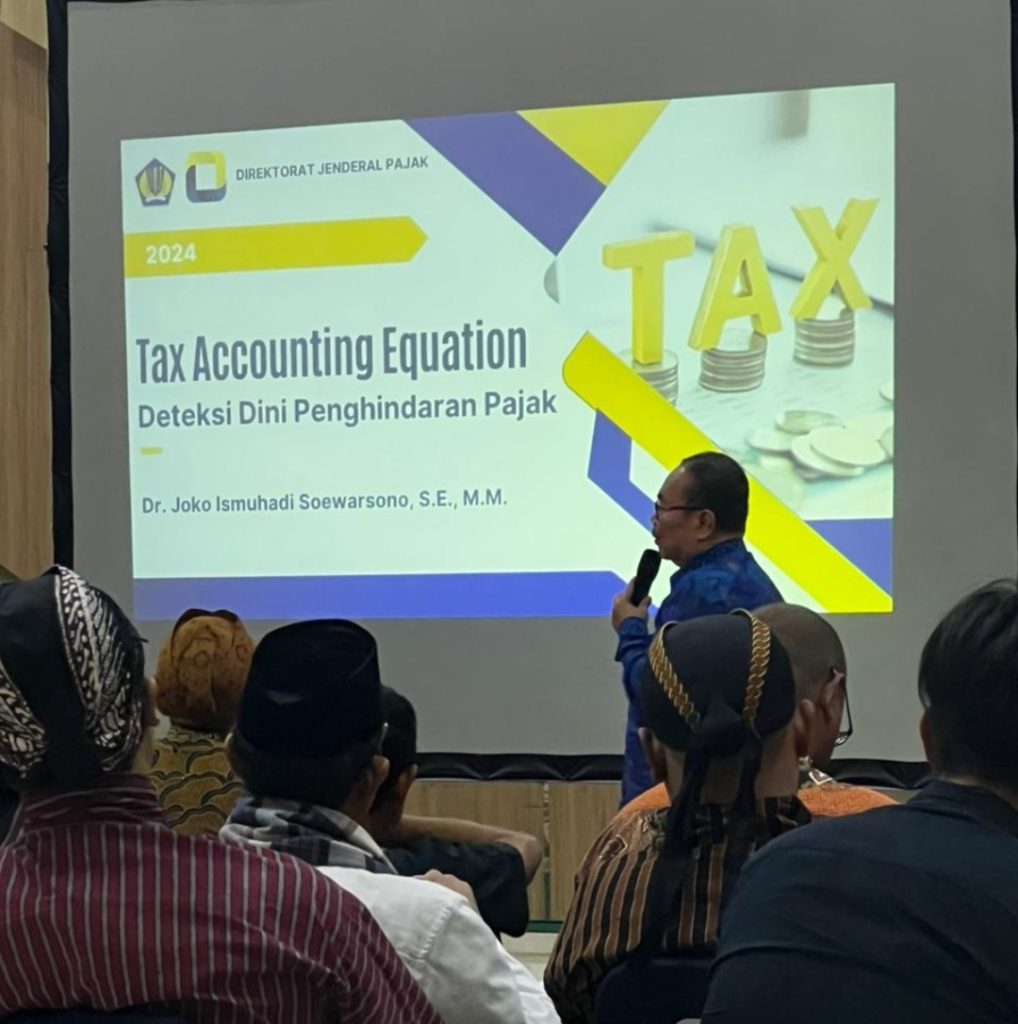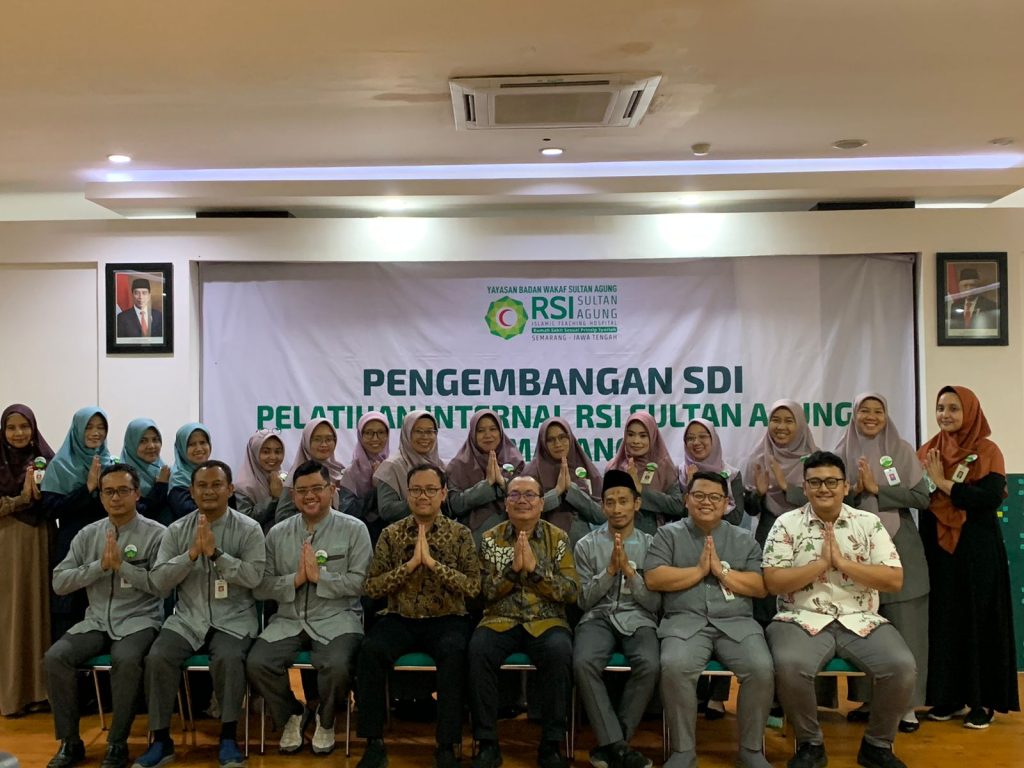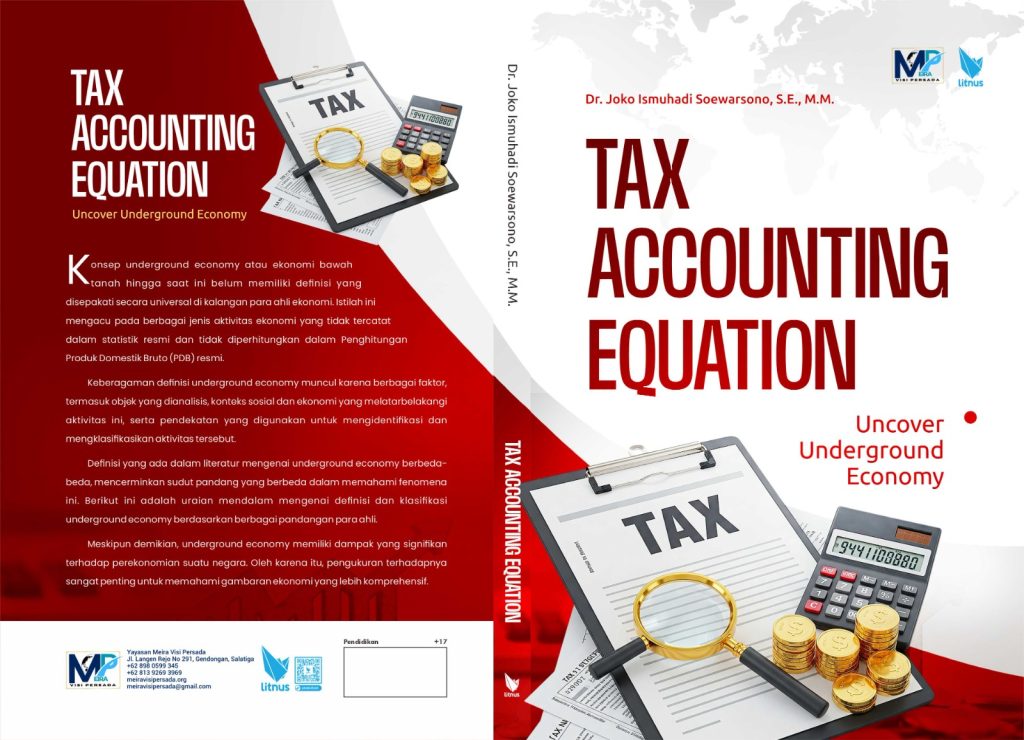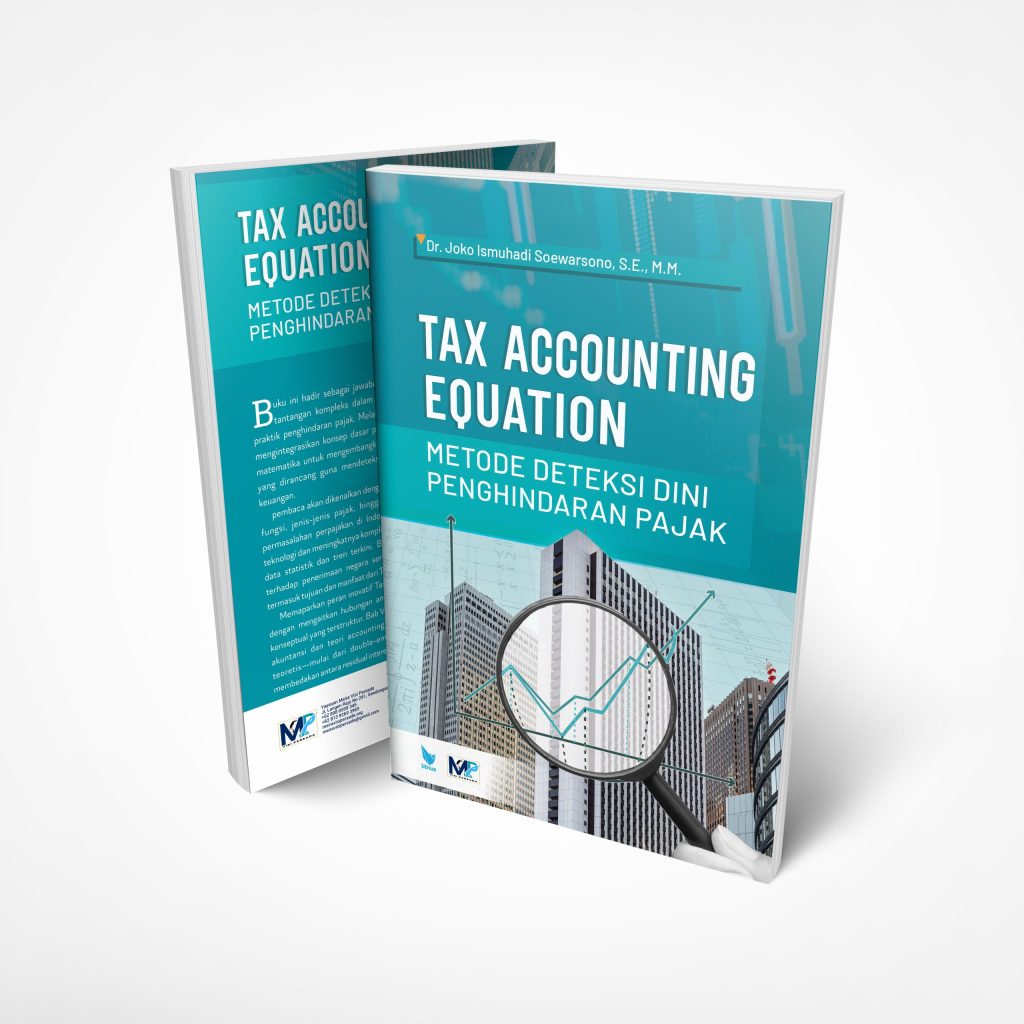
The Potential of Economic Models in Enhancing Tax Ratios by Addressing Underground Economic Activity
- Ekonomi
Friday, 04 April 2025 01:18 WIB

Jakarta, fiskusnews.com:
1. Introduction: Defining the Tax Ratio and the Challenge of the Underground Economy
A nation’s fiscal strength is often gauged by its tax ratio, which represents the proportion of its economic output collected as taxes . This ratio, typically calculated as the total tax revenue divided by the Gross Domestic Product (GDP) and expressed as a percentage, indicates the government’s capacity to finance public services and investments crucial for economic development . However, a significant impediment to achieving an optimal tax ratio is the presence of the underground economy, also known as the shadow or informal economy . This hidden sector encompasses a wide array of economic activities, both legal and illegal, that are deliberately concealed from public authorities to evade taxation and regulatory oversight .
The existence of a substantial underground economy directly undermines a nation’s tax ratio. Because transactions in this sector go unreported, the income generated is not subject to taxation, thus reducing the total tax revenue collected (the numerator in the tax ratio calculation) . Simultaneously, some of the economic activity within the underground economy might still be captured in GDP calculations, particularly through expenditure-based approaches, potentially inflating the denominator (GDP) and further depressing the tax ratio . The scope of the underground economy extends beyond just illegal activities such as the sale of narcotics or illegal weapons . It also includes legal but unreported income, such as under-the-table payments to employees or undeclared tips . This broader definition highlights that addressing the underground economy requires multifaceted strategies that go beyond simply targeting illicit activities.
Economic models offer a potential avenue for quantifying and analyzing the intricacies of the underground economy. By providing insights into its size, scope, and drivers, these models can inform the development of more effective strategies to bring hidden economic activity into the formal sector and, consequently, increase the tax ratio. This report will explore the various types of economic models used for this purpose, analyze their strengths and limitations, and examine the potential role of a specific concept mentioned in the user’s query: “Ismuhadi’s equation.”
2. Understanding the Tax Ratio
The tax ratio, frequently referred to as the tax-to-GDP ratio, serves as a fundamental metric for evaluating a country’s fiscal capacity by comparing its tax revenue to the overall size of its economy, as measured by the GDP . The calculation of this ratio is straightforward: it is the total tax revenue collected by a nation divided by its gross domestic product, multiplied by 100 to express the result as a percentage . While the basic formula remains consistent, it is important to note that different international organizations, such as the International Monetary Fund (IMF) and the Organisation for Economic Co-operation and Development (OECD), might employ slightly varying definitions of what constitutes “tax revenue” for the purpose of this calculation . For instance, the IMF, in its Government Finance Statistics Manual (GFSM), does not include social security contributions as part of tax revenue, considering it a separate component of state revenue, whereas OECD countries typically include these contributions in their tax ratio calculations . This difference in methodology can lead to variations in reported tax ratios across countries and necessitates careful consideration of the specific definition used when making international comparisons or analyzing trends within a single nation over time.
A higher tax ratio generally signifies a greater ability of the government to finance essential public services, including healthcare, education, and infrastructure, as well as social welfare programs . These public investments are widely recognized as critical for fostering long-term economic growth and reducing poverty . The World Bank, for example, suggests that maintaining tax revenues above 15% of a nation’s GDP is an important threshold for promoting economic growth and poverty reduction . Furthermore, the tax ratio serves as a key indicator of a country’s overall fiscal health and the efficiency of its revenue collection system . Policymakers often use this metric to assess year-to-year changes in tax receipts, as it provides a more nuanced understanding of fluctuations in revenue compared to raw amounts, especially when considering the impact of economic growth or recession . Additionally, the standardized nature of the tax ratio allows for meaningful international benchmarking, enabling countries to compare their tax performance and identify potential areas for improvement . However, it is important to note that while a higher tax ratio is generally viewed favorably, excessively high ratios, particularly if coupled with poorly designed tax policies, could potentially hinder investment and overall economic growth . Very high tax rates might discourage individuals and businesses from engaging in productive economic activities, potentially leading to a smaller overall economic output despite a larger share being collected as taxes.
Several factors typically influence a country’s tax ratio. The level of economic development plays a significant role, with developed nations generally exhibiting higher tax ratios compared to developing economies . This is often because economic development leads to increased demands for public spending on more sophisticated services and infrastructure, necessitating a greater capacity to generate tax revenue . The design and effectiveness of a country’s tax policies are also critical determinants. Progressive tax systems and well-enforced tax laws tend to result in higher tax ratios . These policies not only dictate the overall tax burden but also influence economic behavior, potentially affecting the size of the tax base itself . For example, very high marginal tax rates could discourage work effort or investment, potentially shrinking the tax base. The efficiency of a nation’s tax administration is another crucial factor. Robust tax administration systems, coupled with a strong willingness of citizens to comply with tax obligations, lead to better collection rates and consequently higher tax ratios . Even with sound tax laws in place, ineffective collection mechanisms, widespread tax evasion, and corruption can severely limit the amount of revenue a government can generate . Furthermore, the extent of public trust in government institutions significantly impacts tax compliance. Higher levels of public trust generally correlate with greater willingness to pay taxes, potentially leading to a higher tax ratio . When citizens believe their taxes are used effectively and transparently for the common good, they are more likely to comply with their tax obligations . Finally, the size of a country’s informal or underground economy has a direct negative impact on its tax ratio. A larger informal sector means more economic activity occurs outside the formal tax system, resulting in lower overall tax collection .
3. The Underground Economy: A Hidden Economic Force
The underground economy represents a significant segment of economic activity that operates outside the formal regulatory and taxation frameworks of a nation . It encompasses two broad categories: the unreported production and trade of legal goods and services, and the production and distribution of illegal goods and services . Examples of legal activities within the underground economy include individuals working “off the books” for cash, such as in domestic services or small-scale repairs, or self-employed individuals not declaring their full income . Conversely, illegal activities encompass a range of illicit trades such as drug dealing, illegal gambling, and the trafficking of stolen goods . The primary motivation behind engaging in these activities is often to avoid various obligations, including the payment of income taxes, value-added taxes, and social security contributions, as well as to circumvent legal regulations and official procedures . Recognizing the distinction between legal but unreported and illegal activities is crucial for policymakers, as strategies to address tax evasion in the former might differ substantially from those aimed at combating the latter .
The underground economy is typically characterized by several features. Transactions often rely heavily on cash to avoid leaving a paper trail that could be traced by authorities . Many participants operate as small, single-person or entrepreneurial businesses, often striving to maintain a low economic profile to avoid attracting scrutiny from tax authorities . Common activities include undeclared tips received by service workers, under-the-table wages paid to laborers, unreported income from freelance work or small businesses, and various forms of black market sales, alongside illegal ventures like the drug trade and prostitution . A significant challenge for governments is the inherently informal nature of this sector, which makes it exceptionally difficult to track and measure its true extent . Because these activities are intentionally hidden from official view, they are not captured in standard government records or statistical reports, necessitating the use of indirect estimation methods to gauge their size and impact.
The presence of a substantial underground economy has significant repercussions for official economic statistics and results in a considerable loss of tax revenue. Since transactions within this sector go unreported, they are not included in the calculation of key economic indicators such as the Gross Domestic Product (GDP), leading to a distortion of the true size and health of the economy . This underestimation of economic activity can lead to flawed policy decisions, as governments rely on these figures to set monetary and fiscal policies . Furthermore, the failure to report income and transactions directly translates into a substantial loss of tax revenue for federal, state, and local governments . This erosion of the tax base hinders the government’s ability to fund essential public services and infrastructure projects.
Individuals and businesses participate in the underground economy for a variety of reasons. For employers, engaging in off-the-books activities can be a way to avoid costs associated with government fees, licensing requirements, involvement of labor unions, and the payment of payroll taxes . For laborers, the motivations are more diverse. Many individuals work in the underground economy to supplement the income from their mainstream jobs, often in sectors where a second job might even be prohibited . A significant motivation, particularly in countries with high tax rates, is the desire to avoid paying income taxes and thereby increase their overall earnings . Some individuals are compelled to work in the underground economy because they lack the skills, social networks, or necessary documentation to secure employment in the formal sector . In some cases, individuals with marketable technical skills might choose the underground economy because it offers higher pay compared to formal employment . Understanding these varied motivations for both employers and laborers is crucial for developing effective policy interventions aimed at encouraging formalization and reducing the size of the underground economy . Policies need to address the specific incentives that drive participation, which can differ significantly between businesses seeking to reduce operational costs and individuals seeking income or greater flexibility.
4. Economic Models for Estimating the Size of the Underground Economy
Economists employ various methodologies to estimate the size and scope of the underground economy, broadly categorized as direct and indirect methods . Direct approaches involve attempts to directly observe or gather information about undeclared income through methods such as tax audits and questionnaire surveys . While these methods can provide detailed insights into specific instances of non-compliance, they are often limited in their overall scope and can be prone to biases, as tax audits typically target suspected offenders and surveys might suffer from underreporting . Indirect approaches, on the other hand, seek to infer the size of the underground economy by analyzing the traces it leaves in official macroeconomic statistics . These methods rely on the assumption that changes in certain macroeconomic indicators are correlated with fluctuations in the level of underground economic activity . However, these approaches are often criticized for their reliance on assumptions that may not always hold true in reality .
Several prominent indirect methods are used to estimate the size of the underground economy:
The Currency Demand Approach (CDA) is based on the fundamental assumption that transactions within the underground economy are primarily conducted using cash to avoid detection by authorities . This approach posits that an increase in the overall demand for currency in an economy, beyond what can be explained by standard macroeconomic factors like income and interest rates, is indicative of a larger underground economy . Econometric models are employed to estimate the aggregate demand for currency, often including variables such as the tax burden, interest rates on deposits, and the level of income . The portion of currency demand that cannot be attributed to these standard factors is then assumed to be related to transactions in the underground economy . While the CDA offers an intuitive way to link monetary aggregates to hidden economic activity, it has several limitations. Not all transactions in the shadow economy are necessarily settled in cash, and the demand for currency can be influenced by a variety of factors unrelated to underground activity, such as changes in payment habits or financial innovation .
The Multiple Indicators Multiple Causes (MIMIC) Model takes a more comprehensive approach by acknowledging that the underground economy is a complex phenomenon influenced by a variety of factors and manifesting itself in different ways . This model treats the size of the underground economy as a latent (unobservable) variable that is simultaneously affected by several “causes” (e.g., tax burden, unemployment rate, level of regulation) and reflected in several “indicators” (e.g., currency in circulation, labor force participation rate, discrepancy in national accounts) . Statistical techniques, particularly structural equation modeling, are used to estimate the relationships between these causes, the latent variable (underground economy), and the indicators . By simultaneously considering multiple factors, MIMIC models can potentially provide a more nuanced estimate of the underground economy compared to single-indicator approaches like the CDA . However, the results are highly dependent on the specific causes and indicators included in the model and the underlying statistical assumptions, which can influence the accuracy and reliability of the estimates .
The National Accounts Approach attempts to quantify the underground economy by analyzing discrepancies within the national accounting framework . One common method involves comparing the income-based and expenditure-based measures of GDP. In theory, these two measures should be equal; however, the presence of unreported income from the underground economy might lead to a discrepancy, as this income might be captured on the expenditure side but not fully on the income side . Another approach examines the difference between official labor force statistics and estimates of the actual labor force derived from other sources. A decline in official labor force participation, assuming total participation remains relatively constant, could suggest an increase in activity within the shadow economy . While these discrepancies can offer an indication of hidden economic activity, they are not solely attributable to the underground economy and can also reflect errors, omissions, or differences in measurement within the official statistical data .
The Labor Force Approach focuses on the labor market to estimate the size of the underground economy . This method often assumes that the total labor force participation rate in an economy remains relatively stable over time. Therefore, a decrease in the participation rate in the official, formal economy might indicate a corresponding increase in the number of individuals working in the informal, underground economy . By estimating the number of individuals engaged in unreported work and assigning them an average compensation level similar to their counterparts in the formal sector, an estimate of the underground economy’s size can be derived . However, this approach has limitations. Changes in official labor force participation can be caused by factors other than a shift to the underground economy, such as retirement, discouragement from seeking work, or changes in demographics . Furthermore, it does not account for individuals who might hold jobs in both the formal and informal sectors simultaneously (moonlighting) .
| Model Name | Methodology | Key Assumptions | Strengths | Weaknesses |
| Currency Demand Approach | Estimates underground economy based on excess demand for currency beyond standard macroeconomic determinants. | Underground transactions primarily in cash; tax burden is a major driver of the underground economy. | Intuitive link between monetary aggregates and hidden activity. | Not all underground transactions are in cash; currency demand influenced by various factors. |
| MIMIC Model | Treats underground economy as a latent variable with multiple causes (e.g., tax burden, unemployment) and indicators (e.g., currency, labor force participation). | Relationships between causes, latent variable, and indicators are stable and can be modeled statistically. | Considers the multifaceted nature of the underground economy. | Results sensitive to the choice of causes and indicators; relies on statistical assumptions. |
| National Accounts Approach | Analyzes discrepancies between income and expenditure GDP measures or official and actual employment statistics. | Discrepancies primarily reflect underground economic activity. | Uses readily available macroeconomic data. | Discrepancies can arise from other statistical errors or omissions. |
| Labor Force Approach | Infers underground economy size from the difference between official and actual labor force participation rates. | Total labor force participation is relatively constant; a decrease in official participation indicates a rise in informal work. | Focuses on the labor market, a key component of economic activity. | Changes in participation can have other causes; does not account for dual employment. |
5. Exploring “Ismuhadi’s Equation”
An examination of the provided research snippets reveals that “Ismuhadi’s equation” is likely related to tax accounting and forensic analysis within the Indonesian context, rather than being a widely recognized macroeconomic model for estimating the size of the underground economy in general . One snippet specifically mentions “Joko Ismuhadi’s Tax Accounting Equation: A Forensic Tool for Indonesian Tax Analysis,” suggesting its application lies in scrutinizing financial records to uncover potential tax evasion or undisclosed income at the individual or firm level . While another snippet refers to an individual named “Ismuhadi Heru Wijayanto” in the context of tourism, and another mentions “Ismuhadi, S.: 1997” concerning land law in Indonesia, these references appear unrelated to the concept of an economic model for measuring the underground economy .
As a forensic tax accounting tool, “Ismuhadi’s equation” likely focuses on identifying inconsistencies between reported financial data and various indicators that might suggest the presence of hidden income or tax evasion at a micro level within Indonesia . Forensic accounting involves a detailed investigation of financial records to detect fraud or illegal financial activities. A tax accounting equation designed for this purpose would likely aim to pinpoint anomalies, patterns, or discrepancies in financial statements that could indicate underreporting of income, overstatement of expenses, or other methods of tax avoidance or evasion.
Based on the available information, there is no indication that “Ismuhadi’s equation,” as described, is a broad macroeconomic model used for estimating the overall size of the underground economy in Indonesia or elsewhere. Its likely function as a forensic tax accounting tool suggests that it would be more directly applicable to targeted tax enforcement efforts at the level of individual taxpayers or firms within Indonesia, rather than providing a macro-level estimate of the entire hidden economy. While the successful application of such a tool in identifying and rectifying tax evasion would undoubtedly contribute to increasing overall tax revenue, and thus potentially the national tax ratio, its impact would likely be through direct enforcement rather than through providing a comprehensive estimate of the underground economy’s size to inform broader policy changes. Further research beyond the provided snippets would be necessary to fully understand the specific formulation and application of “Ismuhadi’s equation” and its potential impact on taxation in Indonesia.
6. Strategies for Taxing the Underground Economy
Governments and tax authorities employ a range of strategies to effectively tax the underground economy, which can be broadly categorized into strengthening tax enforcement, promoting tax compliance, and addressing the underlying causes of informal economic activity.
Strengthening Tax Enforcement involves increasing the perceived risk and cost of operating in the underground economy. This can be achieved through several methods. Enhancing the likelihood of detection is crucial, which requires increasing the frequency and effectiveness of tax audits and investigations . Implementing significant penalties and fines for tax evasion and non-compliance can also act as a strong deterrent . Furthermore, effective enforcement often necessitates a coordinated approach involving collaboration and information sharing between various government agencies, including tax authorities, labor departments, and licensing bodies . The underground economy frequently involves violations across multiple regulatory domains, making a unified effort essential for comprehensive action .
Promoting Tax Compliance focuses on making it easier and more appealing for individuals and businesses to operate within the formal economy. Simplifying tax systems and reducing the burden of regulatory compliance can significantly lower the costs associated with formalization, thus incentivizing participation in the formal sector . Enhancing public trust in government through greater transparency and accountability in the use of tax revenues can also foster a stronger sense of civic duty and increase voluntary compliance . Additionally, providing comprehensive taxpayer education programs and improving the quality of taxpayer services can help individuals and businesses understand their obligations and navigate the tax system more easily .
Finally, a sustainable increase in the tax ratio requires Addressing the Root Causes of Informal Economic Activity. Factors such as high tax burdens, excessive and cumbersome regulations, limited access to formal employment opportunities, and pervasive corruption can all drive individuals and businesses towards the underground economy . Therefore, a holistic approach necessitates broader economic reforms and institutional improvements aimed at tackling these underlying issues . Simply focusing on punitive enforcement measures without addressing the fundamental reasons why people choose to operate informally is unlikely to yield long-term success .
7. The Role of Technology and Data Analysis in Uncovering Hidden Economic Activity
Technology and data analysis techniques are increasingly playing a critical role in the efforts of governments and tax authorities to detect and analyze underground economic activities, thereby contributing to improved tax collection and a potentially higher tax ratio.
Data mining and analytics techniques offer powerful tools for uncovering hidden patterns and correlations within large datasets that can be indicative of underground economic activity . By analyzing vast amounts of financial data, transaction records, and other relevant information, these techniques can identify anomalies and trends that might suggest unreported income or other forms of tax evasion that would be difficult to detect through traditional methods . For example, analyzing financial transaction data can help identify unusual cash flows or discrepancies between reported income and spending patterns . Similarly, the use of geospatial data and satellite imagery can reveal physical indicators of informal economic activities, such as unregistered construction or informal markets .
Machine learning (ML) and artificial intelligence (AI) are also being increasingly adopted for tax evasion detection and compliance enhancement . ML models can be trained on historical data of tax returns and audit outcomes to identify patterns and predict the likelihood of fraud or evasion in new filings . AI-powered systems can automate various aspects of tax compliance, such as bookkeeping and accounting, reducing the risk of errors and making tax preparation more efficient . Furthermore, AI can facilitate real-time monitoring of tax regulations, proactively identify potential compliance gaps, and provide valuable support during tax audits .
Leveraging social media data presents another avenue for uncovering hidden economic activity . Information shared on social media platforms can sometimes provide insights into individuals’ lifestyles and spending habits that might not align with their reported income, potentially indicating undeclared earnings or tax evasion . However, the use of social media data for tax administration raises important ethical and privacy concerns that need careful consideration . Finally, secure data sharing and information exchange between different government agencies are crucial for a comprehensive approach to combating the underground economy . By pooling resources and sharing relevant data, tax authorities can gain a more holistic view of economic activities and identify individuals and businesses operating in the shadows more effectively .
8. Analyzing the Potential of Economic Models to Increase the Tax Ratio
Economic models offer significant potential to contribute to an increase in the tax ratio by providing policymakers with valuable insights into the underground economy. These models can help understand the underlying drivers and estimate the size and scope of hidden economic activity, enabling the design of more targeted and effective policy interventions . Furthermore, economic models can be utilized to forecast the potential impact of different policy measures on tax revenue and the overall tax ratio, allowing for a more evidence-based approach to fiscal planning . By simulating the complex interactions within the economy, these models can help predict how changes in tax rates, regulations, enforcement efforts, or other factors might influence the size of the underground economy and, consequently, the amount of tax revenue collected .
However, it is important to acknowledge the inherent limitations and challenges associated with applying economic models to the study of the underground economy. The very nature of this hidden phenomenon means that direct data is scarce, and models often rely on indirect indicators and a set of underlying assumptions . The results obtained from these models can be sensitive to the chosen methodology, the specific data inputs used, and the validity of the assumptions made . Therefore, estimates derived from economic models should be interpreted with caution, recognizing the inherent uncertainties associated with quantifying an unobservable sector of the economy .
Regarding “Ismuhadi’s equation,” the available information suggests that it is likely a forensic tax accounting tool specific to the Indonesian context, designed to identify tax evasion at a micro level . While the successful application of such a tool in detecting and preventing tax evasion would undoubtedly contribute to increasing overall tax revenue in Indonesia, its direct impact on increasing the national tax ratio through macro-level estimation of the underground economy is likely limited . A forensic accounting equation is primarily focused on identifying specific instances of non-compliance, which contributes to the tax base but does not provide a comprehensive estimate of the entire underground economy or directly inform broad macroeconomic policies aimed at formalizing the informal sector.
9. Conclusion and Recommendations
In conclusion, enhancing a country’s tax ratio by addressing underground economic activity is a complex challenge that requires a multi-faceted approach. Economic models offer valuable tools for understanding and quantifying the hidden economy, thereby informing the design of effective policy interventions. While various macroeconomic models like the Currency Demand Approach and MIMIC model can provide estimates of the underground economy’s size, these estimates come with inherent uncertainties due to data limitations and methodological assumptions. “Ismuhadi’s equation,” based on the current understanding, appears to be a forensic tax accounting tool specific to Indonesia, likely more suited for targeted tax enforcement at the micro level rather than broad estimation of the underground economy.
For policymakers seeking to increase the tax ratio by tackling the underground economy, the following recommendations are offered:
- Utilize a Multi-Method Approach to Economic Modeling: Employ a combination of different economic models to estimate the size and scope of the underground economy, recognizing the strengths and limitations of each approach. Compare and triangulate the results to gain a more robust understanding of the issue. Use these model-based insights to inform the development of targeted policies and to forecast the potential impact of these policies on tax revenue and the tax ratio, while remaining aware of the inherent uncertainties in these estimations.
- Implement a Comprehensive Strategy to Address the Underground Economy: Adopt a holistic strategy that integrates strengthening tax enforcement through increased audits and penalties, promoting voluntary tax compliance by simplifying the tax system and building public trust, and addressing the fundamental root causes of informal economic activity through broader economic and institutional reforms.
- Invest in Technology and Data Analytics Capabilities: Significantly invest in advanced technology and data analytics tools, including data mining, machine learning, and artificial intelligence, to enhance the detection of tax evasion and improve overall tax compliance. Ensure that robust data privacy safeguards and ethical considerations are in place when leveraging new data sources, such as social media, for tax administration purposes.
- Explore and Support Micro-Level Forensic Tools for Tax Enforcement: Acknowledge the potential value of forensic tax accounting tools, such as “Ismuhadi’s equation” in the Indonesian context, for identifying specific instances of tax evasion. Encourage further research into their specific applications and effectiveness and consider exploring the development and implementation of similar micro-level tools for targeted tax enforcement in other relevant contexts.
Reporter: Marshanda Gita – Pertapsi Muda
Share
Berita Lainnya
Analisis Persamaan Akuntansi dalam Hukum Pajak Indonesia dan Penanganan Pengurangan Utang
[GRATIS] WEBINAR HR – Membangun Karir di Bidang Human Resource Dari Awal Hingga Menjadi Profesional HR Bersertifikasi
KOMISI: Seri Ketentuan Umum & Tata Cara Perpajakan Episode 4 bertajuk Pembukuan Pajak
Insentif Pajak dan Implikasinya
HEBOH! BONGKAR RAHASIA EKONOMI BAWAH TANAH! WAJIB PAJAK, ANDA PERLU BUKU INI SEBELUM TERLAMBAT!
Rekomendasi untuk Anda

Berita Terbaru
Eksplor lebih dalam berita dan program khas fiskusnews.com
Tag Terpopuler
# #TAE
# #TAX ACCOUNTING EQUATION
# #TAX FRAUD
# #TAX EVASION












